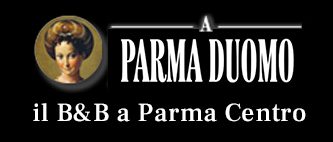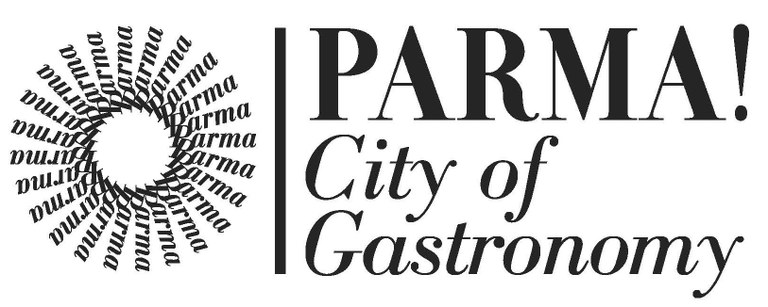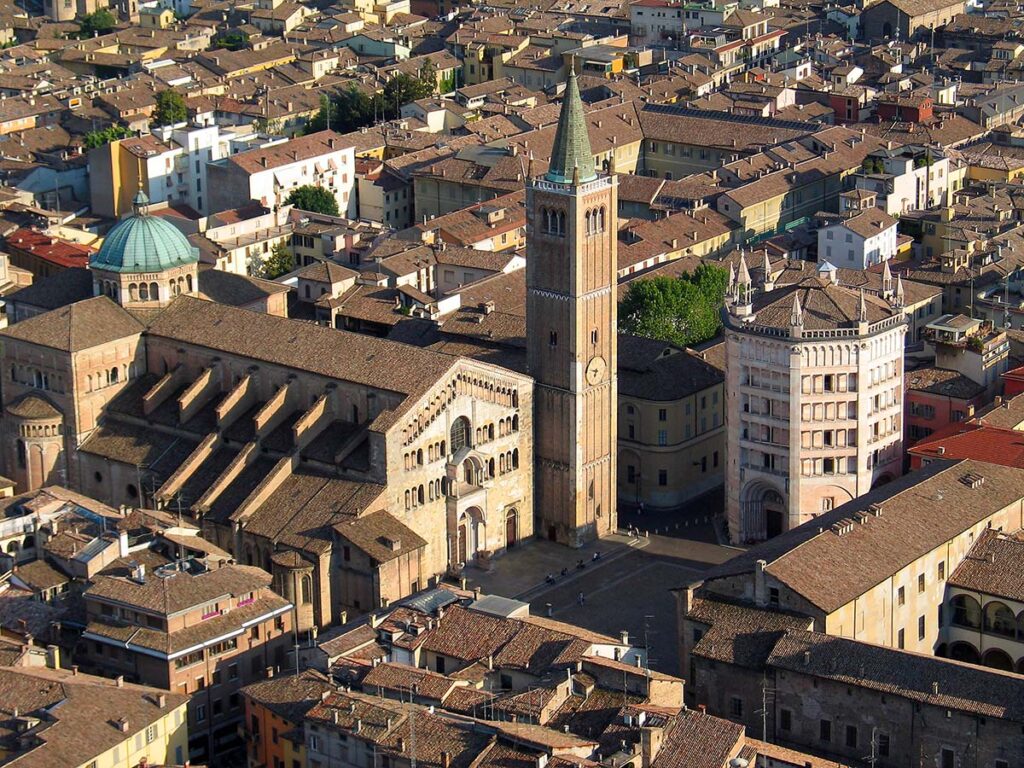
Four places of worship, a stone’s throw from our B&B A Parma Duomo
In the historical centre of Parma, a stone’s throw from our B&B, you can visit four important places of worship:
The Duomo (cathedral)
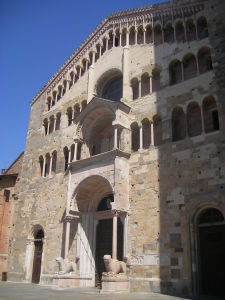
The Cathedral of Santa Maria Assunta is the most important Catholic place of worship in Parma, the mother church of the diocese of the same name. It stands in Piazza Duomo, next to the Baptistery and the Bishop’s Palace.
Considered one of the most distinguished examples of Po Valley Romanesque architecture, rich in important artistic testimonies (from the bas-reliefs of theAntelami to the frescoes of the Correggio) was consecrated by Pope Paschal II between 31 October and 4 November 1106. In 2006, with a rich calendar of historical, artistic and ecclesiastical events, its ninth centenary of life.
For more information visit www.piazzaduomoparma.com or the page on Wikipedia.
the Baptistery
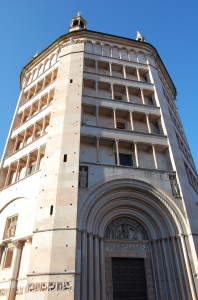
The Baptistery of Parma, a building used for the baptismal rite, is located next to Parma Cathedral and is considered the junction point between Romanesque and Gothic architecture.
The genius and culture of the great architect and sculptor Benedetto Antelami is fully evident in the Baptistery he designed in the form of an octagon in pink Verona marble, with an alternation of three portals with respective architraves and lunettes, rich in theological references and symbolic representations typical of medieval iconography.
Running all around is the zooforo: a series of carved tiles with fantastic and real animals, symbols of the ideas of life and nature in the Middle Ages. The interior presents sleek lines thanks to the sixteen ribs radiating out towards the ogival vault.
In the centre stands the large immersion baptismal font dating from the end of the 13th century. Also inside, the cycle of months and seasons and the respective signs of the zodiac sculpted by Antelami. A splendid cycle of tempera paintings from the second half of the 12th century can be admired in the dome.
For more information visit thepage on Wikipedia .
the Abbazia di San Giovanni Evangelista
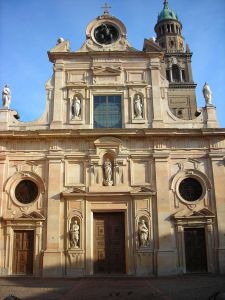
The Abbey of San Giovanni Evangelista is a Benedictine complex in the historical centre of Parma. The vast ensemble of buildings includes the church, the monastery and the old apothecary shop.
Built in the 10th century by Bishop Sigefredo II on an earlier oratory dedicated to Saint Columbanus[1], the abbey was entrusted to the first abbot Giovanni, a canon of Parma Cathedral. In 1477, the entire complex was damaged by fire.
The abbey basilica was rebuilt from around 1490, with a final design in 1510 by Bernardino Zaccagni. The work had to be completed around 1519. From the original plans, Abbot Girolamo Spinola had planned to punctuate the architectural spaces with extensive pictorial decoration, securing the younge Correggio, who only a few years earlier had given an excellent example of his art in the city in another Benedictine monastery, that of San Paolo, where he had decorated the celebrated Camera della Badessa (Abbess Chamber) for Abbess Giovanna Piacenza.
In San Giovanni Correggio executed five frescoes. The first is generally considered to be the lunette with St. John and the eagle (c. 1520, at which time he may already have had the entire decorative ensemble in mind), followed by the dome in which the Ascension of Christ is depicted along with the decoration of the drum and the four pendentives. The third undertaking concerned the decoration of the vault and the bowl of the apse of the Major Chapel, a work that was partially destroyed in 1586 with the extension of the choir, of which the large central fragment of the Coronation of the Virgin remains today in the National Gallery in Parma. The fourth concerned the choir walls, which were completely destroyed with the extension. The fifth is the pictorial frieze that runs along the entire inner perimeter, still in situ. Preparatory drawings show how even parts left to collaborators were designed by Correggio, such as the candelabras that run along the sides of the vault ribs on the presbytery and the figures of putti on the sails. Particularly in the friezes, in an antiquated style, Correggio demonstrated an up-to-date approach to more recent Roman sites, well before Giulio Romano spread these stylistic features from Mantua (from 1524), apparently confirming the hypothesis that Correggio travelled to Rome in those years.
Finally, in San Giovanni Correggio left around 1524 two canvases in the Bono Chapel, now in the National Gallery in Parma: Lamentation over the Dead Christ and Martyrdom of Four Saints.
For more information visit: www.monasterosangiovanni.com or the page on Wikipedia.
the Basilica di Santa maria della Steccata
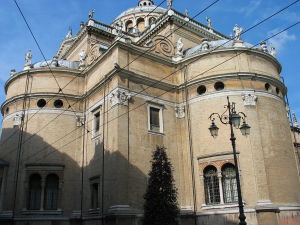
The Magistral Basilica of Santa Maria della Steccata, since 1718 seat of the Constantinian Order of St. George, is a Marian shrine built in Parma between 1521 and 1539 and elevated to the rank of minor basilica in 2008.
The building is laid out on a Greek cross plan, with arms placed on the cardinal axes and closed by four large symmetrical apses, and between the arms are four quadrangular chapels that have always been used for worship. It is difficult to establish who is responsible for the detailed design of the church, whose layout is reminiscent of the solution conceived by Bramante for St. Peter’s in the Vatican; Vasari, in his Lives, states that it was made, ‘as they say, to Bramante’s design and order’.
The interior is decorated with 17th century frescoes of the Parma school: the entire pictorial decoration was initially entrusted to the ParmigianinoHowever, he was only able to realise the very valuable frescoes of the eastern sub-arch with Three wise virgins and three foolish virgins; The work was continued by Michelangelo Anselmi, who painted the frescoes of the Coronation of the Virgin in the eastern apse basin (based on a design by Giulio Romano), and by Bernardino Gatti, who painted the Assumption of Mary in the dome.
For more information visit the page on Wikipedia .
